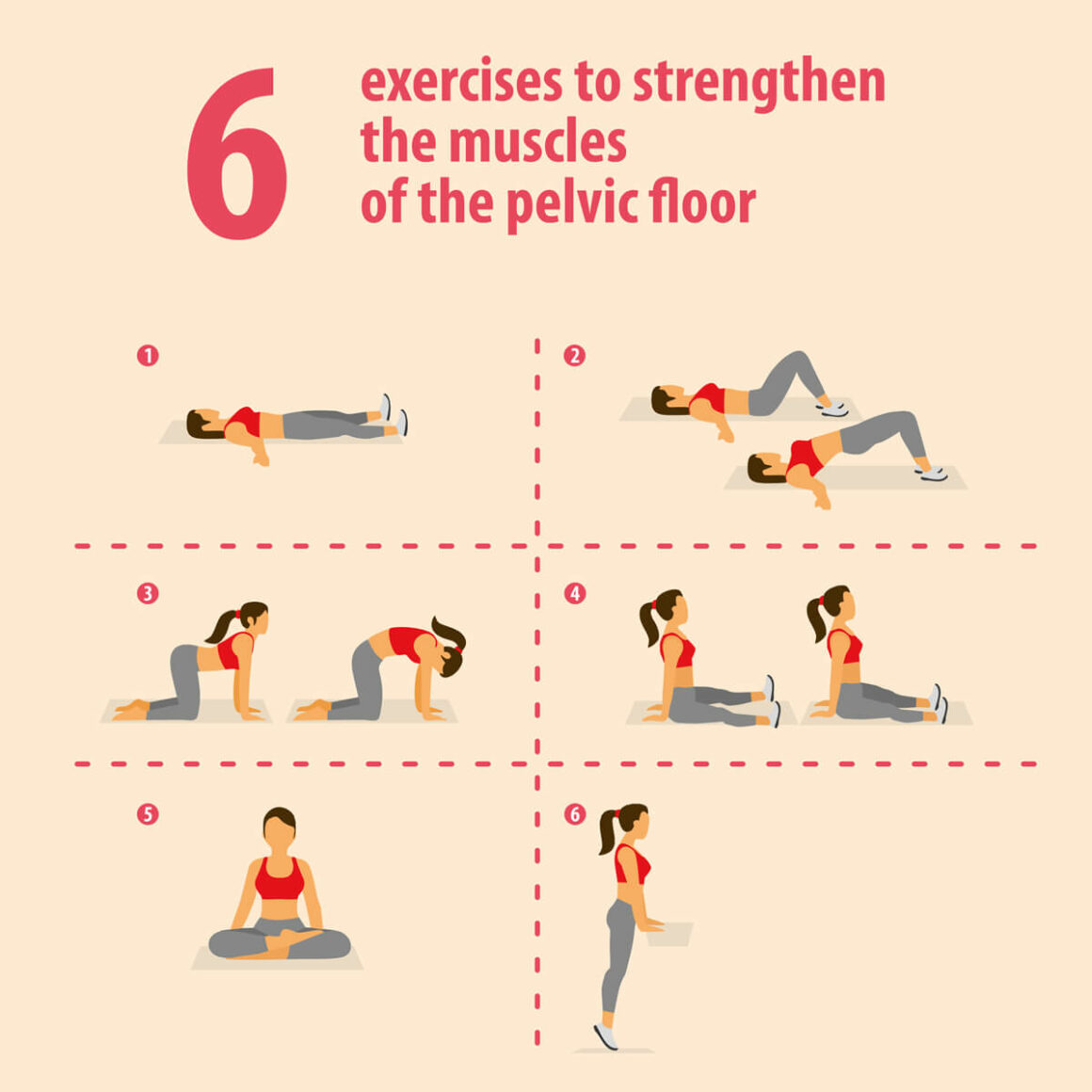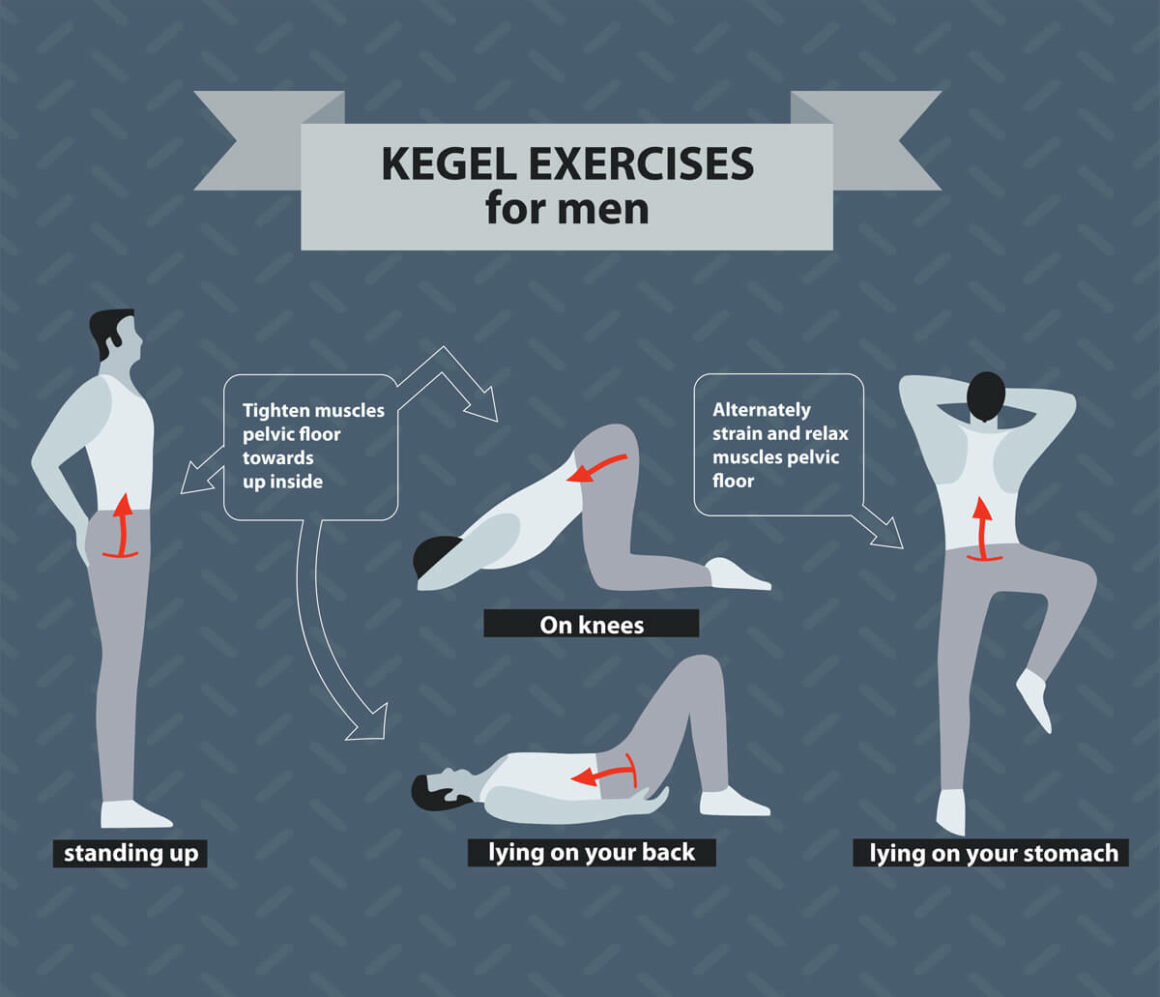You might already have an exercise program for toning your abs, biceps, triceps, hamstrings, and quads. By stressing your muscles through exercise, you can improve stamina, posture, and mood, reduce the risk for chronic disease, and generally support your overall health.
How about your pelvic floor?
Your pelvic floor muscles support your pelvic organs, including your bladder. They are sometimes compared to a hammock—a layer attached to your sit bones (i.e., bones in the lower part of your pelvis), tail bone, and pubic bone—that keeps your pelvic organs in place.
Just like any muscle group, your pelvic floor can weaken over time. This happens as we age, but it can also happen after certain circumstances, such as pregnancy, childbirth, or prostate surgery. Being overweight can take a toll on pelvic floor muscles, too.
Just like any muscle group, your pelvic floor can weaken over time.
It’s easy to keep your pelvic floor muscles in shape. Kegel exercises (also called pelvic floor muscle training) have been around for decades. They were first developed by American gynecologist Arnold Kegel in the 1940s. But they’re not just for women. Men benefit from Kegels too.
Why should men and women do Kegels?
Urologists often recommend Kegel exercises to people with overactive bladder, pelvic organ prolapse, and other urologic issues, such as incontinence (urine leakage). Strengthening and toning pelvic floor muscles can help with these problems.
Kegels can have sexual benefits, too. Men may have improved erections. Women who do Kegel exercises regularly often find that vaginal penetration becomes more comfortable. Orgasms may intensify for both men and women.
One you learn the technique, Kegel exercises are easy to do. You need no special equipment, and they can be done anywhere. They’re also discreet; nobody will know when you’re doing Kegels.
Note: Kegels aren’t appropriate for everyone. In some cases, pelvic floor problems develop because the muscles are too tense and are difficult to relax, making Kegels less effective. Your doctor can guide you on your personal situation.
How do I get started with Kegels?
While Kegels are simple, they need to be done correctly, so talk to a doctor or other healthcare professional before making them part of your routine.
The most important aspect of Kegel exercises is making sure you’re working the right muscle group. Here are some ways to make sure:
- Imagine that you’re about to pass gas. Squeeze the muscles that would stop you from doing so. The pulling sensation you feel when you squeeze indicates your pelvic floor muscles.
- The next time you urinate, stop the urine flow midstream, paying attention to the muscles you use. If you can stop the flow, you have found your pelvic floor muscles.
- Women might try putting a finger inside their vagina, then imagining they’re stopping their urine stream. When squeezing the muscles, they should feel a tightness around their finger.
It can take time and practice to determine which muscles to target.
Each time you squeeze those muscles, you’re doing a Kegel.
At first, try holding each Kegel for a second or two. Then relax for a few seconds. Then Kegel again. This pattern of repeated squeezing and relaxing is the core component of a Kegel exercise program.
Over time, as your pelvic floor starts to strengthen, you should find that you can hold Kegels for longer durations. Ten seconds is a good goal, but if you can’t do it at first, that’s fine. Your ability to hold the Kegel for longer periods of time should improve with repetition.
Create a Kegel exercise plan
Once you’ve gotten the hang of Kegels, make them a daily routine. Some experts recommend doing Kegel exercises 3 times a day in sets of 10 to 15 squeeze-relax repetitions (sometime called reps).
You can also vary your position. Consider doing some of your Kegels while standing, others while sitting, and the rest while lying down.
Another way to vary your Kegels is to do short or long reps. Short reps are quick in succession: you hold each Kegel for a couple seconds, relaxing for a few seconds in between each one. For long Kegels, you hold each Kegel for a longer period (such as 10 seconds) with an equal rest time in between each one. Doing short and long reps gives your pelvic floor more comprehensive training.
A word about weights: Some people use special weights or cones to enhance their Kegel practice. You might see some of these products for sale. Such devices should be purchased and used only with the guidance of a qualified healthcare professional.
Tips for doing Kegel exercises
As you start out with Kegels, keep these tips mind:
- Make sure you’re relaxing your pelvic floor muscles between each Kegel squeeze. This resting period is part of the program and to avoid injury, it’s important not to skip it.
- Make sure the muscles in your stomach, back, thighs, and buttocks stay relaxed while you do your Kegel exercises. Focus on your pelvic floor only.
- Breathe normally. Don’t hold your breath while you’re doing Kegels.
- Don’t do Kegel exercises while you’re urinating. This can actually weaken the pelvic floor and damage your kidneys and bladder.
- Don’t overdo it! As the saying goes, “all things in moderation.” This idea applies to Kegels. If you do too many Kegels, your pelvic floor can become too tight, and that can lead to urine leaks, pelvic organ prolapse, and sexual pain.
Getting Results
Once you start a regular routine of doing Kegels, you should start seeing a difference in about 4 to 6 weeks. This might mean fewer urine leaks, fewer trips to the bathroom, or improved sexual health. However, for some people, improvement takes longer, so we encourage you to stick with it.
Resources
Healthline.com
Crouch, Marcy, PT, DPT, CLT, WCS
“Yes, You Really Can Do Too Many Kegels. Here’s What Happens”
(December 11, 2020)
https://www.healthline.com/health/parenting/yes-you-really-can-do-too-many-kegels-heres-what-happens
National Association for Continence
“Kegel Exercises: A Step-By-Step Guide”
https://www.nafc.org/kegel-exercises
“Kegel Exercises for Men”
https://www.nafc.org/kegel-exercises-for-men
National Institute of Diabetes and Digestive and Kidney Diseases
“Kegel Exercises”
(Last reviewed: April 2014)
https://www.niddk.nih.gov/health-information/urologic-diseases/kegel-exercises
Urology Care Foundation
“Kegel and Pelvic Floor Exercises”
(April 1, 2019)
https://www.urologyhealth.org/healthy-living/care-blog/2019/kegel-and-pelvic-floor-exercises
VoicesForPFD.org (American Urogynecologic Society)
“Pelvic Floor Muscle Exercises and Bladder Training”
(2016)
https://www.voicesforpfd.org/assets/2/6/Bladder_Training.pdf
“Pelvic Floor Muscle Strengthening”
https://www.voicesforpfd.org/assets/2/6/Kegel_Exercises.pdf
WebMD
Fries, Wendy C.
“Kegel Exercises: Treating Male Urinary Incontinence”
(Medically reviewed: July 21, 2020)
https://www.webmd.com/urinary-incontinence-oab/kegel-exercises-treating-male-urinary-incontinence




